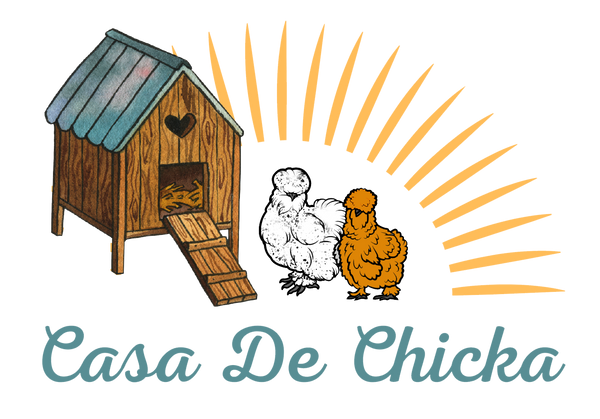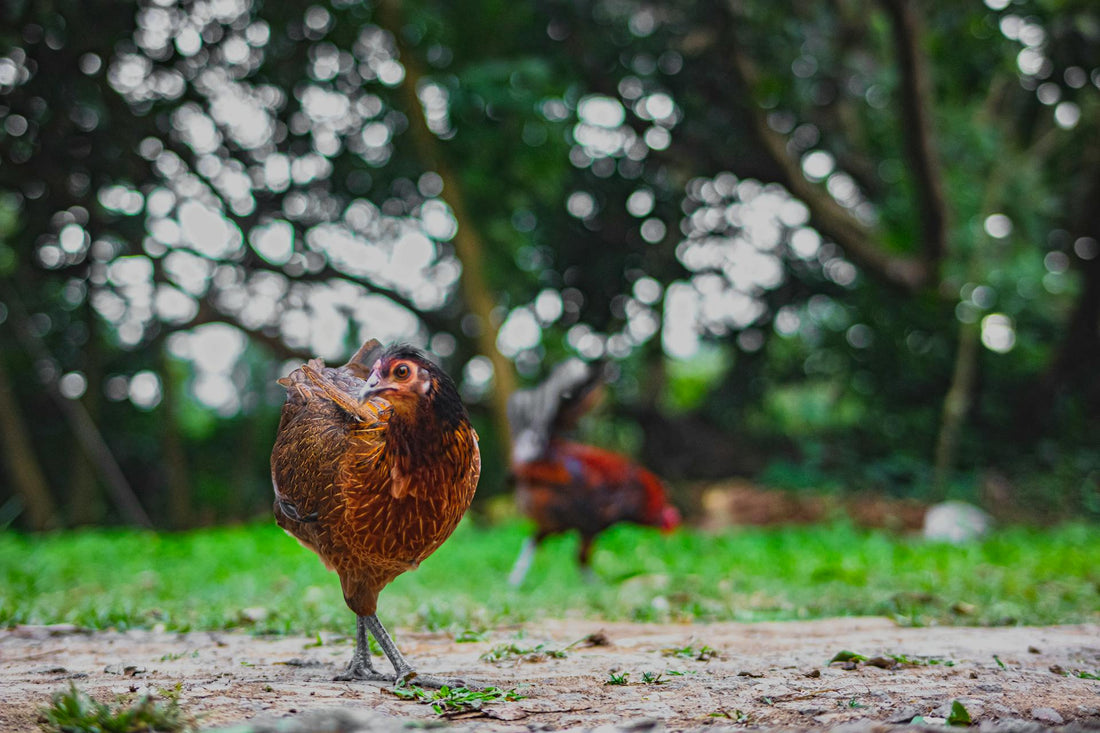Have you ever gazed into the beady eyes of a chicken and wondered, "How did you and your ancestors end up here, scratching around in my backyard?" Well, the story of chicken domestication is as fascinating as it is long, taking us back thousands of years to the dense jungles of Southeast Asia. So, let's embark on a journey to uncover the roots of chicken domestication.
From Jungle Fowl to Barnyard Pals
The Wild Ancestor: Meet the Red Junglefowl
The Original Chicken: The story of every backyard hen and strutting rooster begins with the red junglefowl, a wild bird native to the lush jungles of Southeast Asia. With its striking red and gold plumage and familiar crow, it's easy to see the family resemblance.
Survival Skills: The red junglefowl is a master of survival, adept at foraging for a diverse diet and evading predators. These survival traits laid the groundwork for the domestic chicken's own foraging and survival instincts.
First Contact: Humans and Junglefowl Cross Paths
Early Bird Meet and Greet: The first interaction between humans and red junglefowl likely occurred as humans expanded their territories and began to cultivate land. These birds, perhaps attracted by the cleared land and possibility of easy food, caught the eye of early farmers.
Attraction Factors: It wasn't just the red junglefowl's eggs that made them appealing to humans. Their behavior, coloration, and even the crowing of the roosters held cultural and aesthetic appeal.
The Journey of Domestication: From Wild to Mild
Early Steps of Taming
Capturing and Rearing: The first steps toward domestication likely involved capturing wild junglefowl and rearing them in close proximity to human settlements. Over time, these birds adapted to their new environment, slowly evolving from wild to semi-domesticated states.
Selective Breeding Begins: Early farmers may have started selectively breeding junglefowl for specific traits, like tameness, egg production, or even plumage color. This was the beginning of transforming the wild junglefowl into the domestic chicken.
The Co-evolution of Chickens and Humans
A Symbiotic Relationship: As humans transitioned from nomadic lifestyles to settled agriculture, chickens became integral to these new farming communities. They provided a steady source of protein through their eggs and meat, and in return, humans provided food and protection.
Cultural Integration: Chickens quickly became more than just a food source; they became part of cultural rituals, religious practices, and social structures. Their role in society expanded beyond the farmyard.
The Genetic Journey: From Jungle to Genes
Tracing the Genetic Lineage
DNA Tells the Tale: Modern genetic studies have confirmed that the red junglefowl is the primary ancestor of domestic chickens. However, these studies also suggest that there might have been interbreeding with other wild fowl species along the way, contributing to the genetic diversity of today’s chickens.
Adaptation and Evolution: Over generations, as chickens spread across different geographies, they adapted to various environments. This led to the development of different physical and behavioral traits suited to their new homes – from cold-tolerant breeds in the north to heat-adapted varieties in the tropics.
The Chicken’s Grand Global Tour
Spreading Wings and Claws
Across Continents and Cultures: From Asia, chickens embarked on a grand global tour, traveling to the Middle East, Africa, Europe, and beyond. By the time of the ancient Greeks and Romans, chickens had become a staple in agriculture and culture, revered for their eggs, meat, and even their prowess in cockfighting.
A Bird for Every Purpose: Different cultures bred chickens for different purposes. Some focused on egg production, others on meat, and some on the birds’ fighting abilities. This led to the diverse range of breeds we see today.
The Chicken: A Historical Superstar
Feathered Celebrities of the Ancient World
Cultural Icons: In ancient Egypt, chickens were associated with deities and featured in art and hieroglyphs. In Rome, they were consulted as oracles – yes, chickens predicting the future!
Beyond the Coop: Chickens weren’t just confined to farms. They strutted into myths, folklore, and even onto coins and medallions as symbols of prowess and fertility.
The Evolution of Chicken Breeding
Selective Breeding: Shaping the Modern Chicken
A Breed for Every Need: Over centuries, selective breeding transformed these wild jungle birds into the myriad of breeds we have today. From the fluffy Silkies to the regal Brahmas, each breed has its own story, shaped by human needs and preferences.
The Science of Breeding: The advent of modern genetics and breeding techniques in the 20th century further accelerated the development of specialized breeds, optimizing them for egg production, meat yield, or even as show birds.
Chickens in the Modern World
The role of chickens in the modern world is a testament to their incredible journey through history. No longer just farmyard dwellers or symbols in folklore, chickens have pecked their way into various facets of contemporary life. Let's delve deeper into the versatile roles of chickens today, from sustainable living icons to beloved backyard buddies.
The Rise of Urban Chicken Keeping
Backyard Chickens: In urban and suburban areas, keeping backyard chickens has become increasingly popular. These modern chicken keepers value the birds for their egg-laying abilities, their role in composting and gardening, and as part of a sustainable lifestyle.
Educational Tools: For families, chickens have become a means of educating children about where food comes from, responsibility through pet care, and the importance of sustainable living.
Chickens as Part of the Green Movement
Eco-Friendly Warriors: Chickens contribute to eco-friendly living by reducing kitchen waste through their diet and producing natural fertilizer. They are an integral part of permaculture systems, contributing to soil health and pest control in gardens.
Sustainable Protein Source: As concerns about the environmental impact of large-scale meat production grow, chickens offer a smaller-scale, more sustainable source of protein, both through their eggs and meat.
The Poultry Industry: Adaptation and Change
Shifts in Farming Practices: The commercial poultry industry has seen shifts towards more humane and sustainable practices, driven by consumer demand for ethically produced food. Free-range and organic farming practices are becoming more common.
Technological Advancements: Technology has revolutionized chicken farming, from advanced breeding techniques to improvements in feed efficiency and health management, ensuring higher standards of welfare and productivity.
Chickens in Art and Culture
Feathered Muses: Chickens continue to inspire artists, writers, and filmmakers, symbolizing everything from the pastoral idyll to themes of freedom and survival.
Cultural Celebrations: Chickens remain a part of various cultural and religious practices around the world, celebrated in festivals, depicted in traditional artworks, and featured in folklore and stories.
Chickens as Therapy Animals
Emotional Support Birds: Beyond being pets, chickens are increasingly recognized for their therapeutic potential. From interacting with elderly residents in care homes to supporting children with special needs, chickens provide companionship, stress relief, and emotional support.
The history of chicken domestication is a story of adventure, utility, and companionship. From their wild origins in the jungles of Asia to the cozy coops in backyards around the world, chickens have been close companions to humans for thousands of years. So, the next time you collect eggs or watch your chickens peck around your garden, remember that you’re experiencing a living piece of history, a legacy that stretches back to the dawn of civilization. Here’s to chickens: the feathered friends that conquered the world, one peck at a time! 🌏🐔🌿
